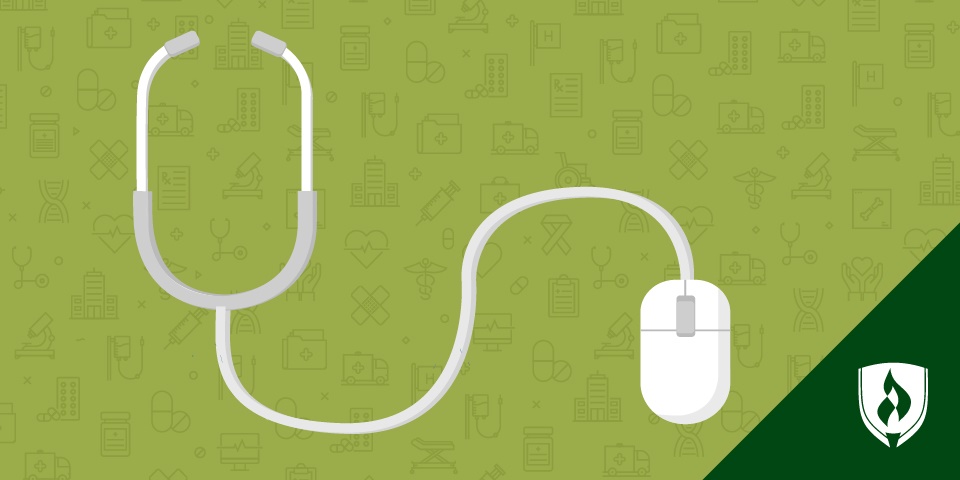Health Information Trends: What You Need to Know About Information Governance
By Ashley Abramson on 03/27/2017

Medical information offers valuable insight that can lead to life-changing, business-enhancing discoveries. And as new technology and software for managing healthcare information emerge, health information technology (HIT) professionals and healthcare organizations have the opportunity to better control costs and enhance patient care with how their data is handled.
Think of health information as a valuable currency HIT professionals can invest back into their organization. Information is a strategic business asset, similar to people, capital or inventory, according to the American Health Information Management Association (AHIMA). In order to use it effectively for organizational decision-making, performance improvement, cost management and risk mitigation, it requires a high level of oversight.
So how exactly can HIT professionals use the information they store and manage in a way that best serves everyone? This is where information governance comes in. Furthermore, exploring career paths in Health Information opens avenues for professionals to contribute to this field while advancing their careers.
What is information governance, anyway?
“Information governance is the responsible gathering, protection, maintenance and utilization of electronic patient health information to improve healthcare outcomes,” says Denise Van Fleet, MS, RHIA and Program Coordinator for the Health Information Management (HIM) program at Rasmussen College.
HIT professionals use accountability framework for information and processes alongside roles, standards and metrics to effectively and efficiently achieve business and health goals, according to the Association for Information and Image Management (AIIM).
This trend began in 2014, when AHIMA put a label on information governance. This led health information technicians to a new level of responsibility and stewardship of the valuable documents they manage.
The concept of information governance may seem intimidating on the surface. But it is a core aspect of understanding the evolving HIT industry.
Why is information governance so important?
The need for information governance is manifold. As digital storage and sharing, including social media use, grow more prevalent, so does the risk of security breaches. Proper information governance ensures healthcare information is handled with the utmost responsibility and confidentiality, protecting patients and healthcare facilities alike.
Digital data storage also provides an opportunity for HIT professionals to analyze the information they work with, ensuring no stone is left unturned when it comes to protecting costs and increasing patient well-being. One AIIM study found that legal costs, fines and damages could be reduced by 25 percent if organizations applied information governance best practice procedures.
Ultimately, an information governance program adds to the overall credibility of a healthcare organization because it displays their pursuit of continued growth as a business and source of patient care.
According to AHIMA: “Adopting an information governance program shows a healthcare organization’s commitment to managing its information as a valued strategic asset. Information governance serves the dual purpose of optimizing the ability to extract clinical and business value from healthcare information while simultaneously meeting compliance needs and mitigating risk.”
How does information governance work?
You may be wondering what information governance looks like on a practical level? It starts with implementing computer software to collect information on each patient when they visit with their doctor. With this important data at their fingertips, HIM professionals can study their findings to improve outcomes for other patients. Van Fleet provided the following fictional anecdote as an example of how information governance can affect excellence in both business and medicine:
"HIT and HIM professionals must be aware of the information and be an advocate for using it."
“Studying 1,000 heart patients with the same illness, say atrial fibrillation, might identify that patients who had heart testing that cost $15,000 had the same or worse results than patients who had only $10,000 worth of testing. This example shows that patients might be over-tested—wasting patient time and using healthcare dollars from both the patient and insurance—only to get the same or worse patient result. This example might result in a recommendation to reduce testing for patients with atrial fibrillation.”
Ensuring proper information governance is a team effort among HIM leaders in a given organization. There are many ways to approach it, but AHIMA recommends appointing an HIM leader skilled in IT, data analytics, privacy and security, legal, regulatory and enterprise information management. This person will collaborate with other senior leaders in the organization to develop and run an information governance program that will “educate, inform and lead information governance initiatives that will ensure the organization’s information is trustworthy, reliable and secure.”
The future of information governance
“HIT and HIM professionals must be aware of the power of the information and be an advocate for using it,” Van Fleet explains. “They must capitalize on this opportunity by proposing and completing health information database uses, thereby demonstrating their knowledge, ability, expertise and value to American healthcare.” She adds that the uses of this health information—both coded data and abstracted patient information—are innumerable.
Clearly, as healthcare technology evolves, so will the need to protect and maximize information. The trends and techniques in the field are constantly evolving, which is why it’s important to keep a pulse on industry updates. Stay up to date with the help of our article: Keeping Up with Technology in Healthcare: 10 HIT Blogs Worth Following.
RELATED ARTICLES:




